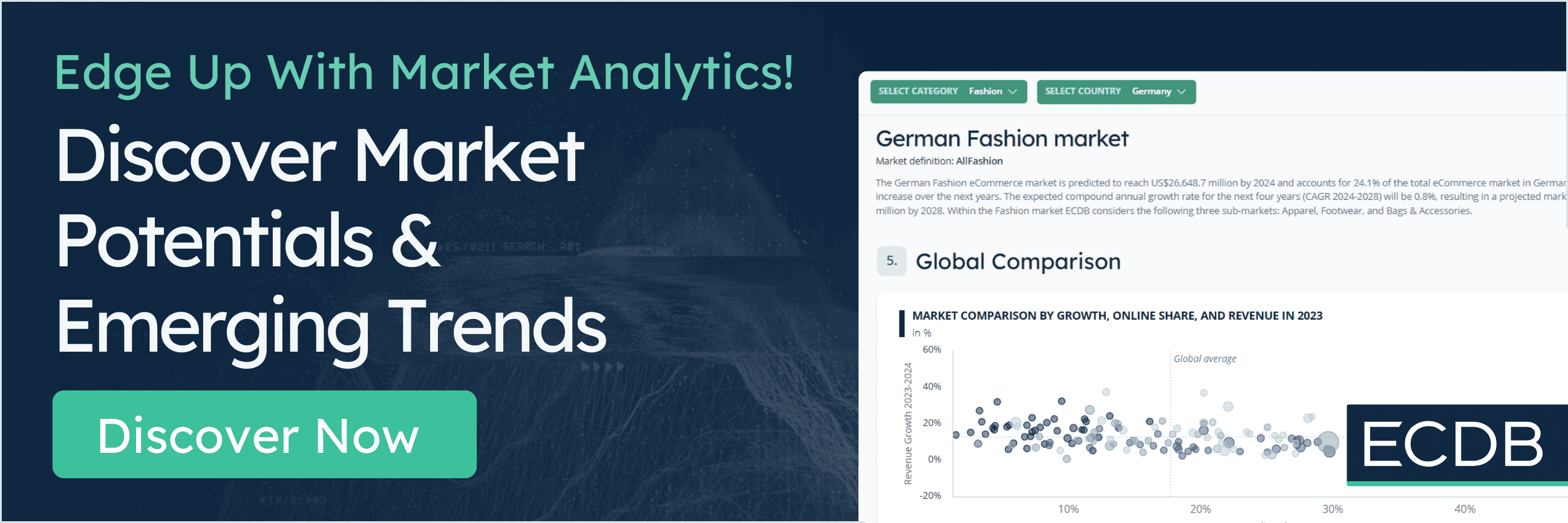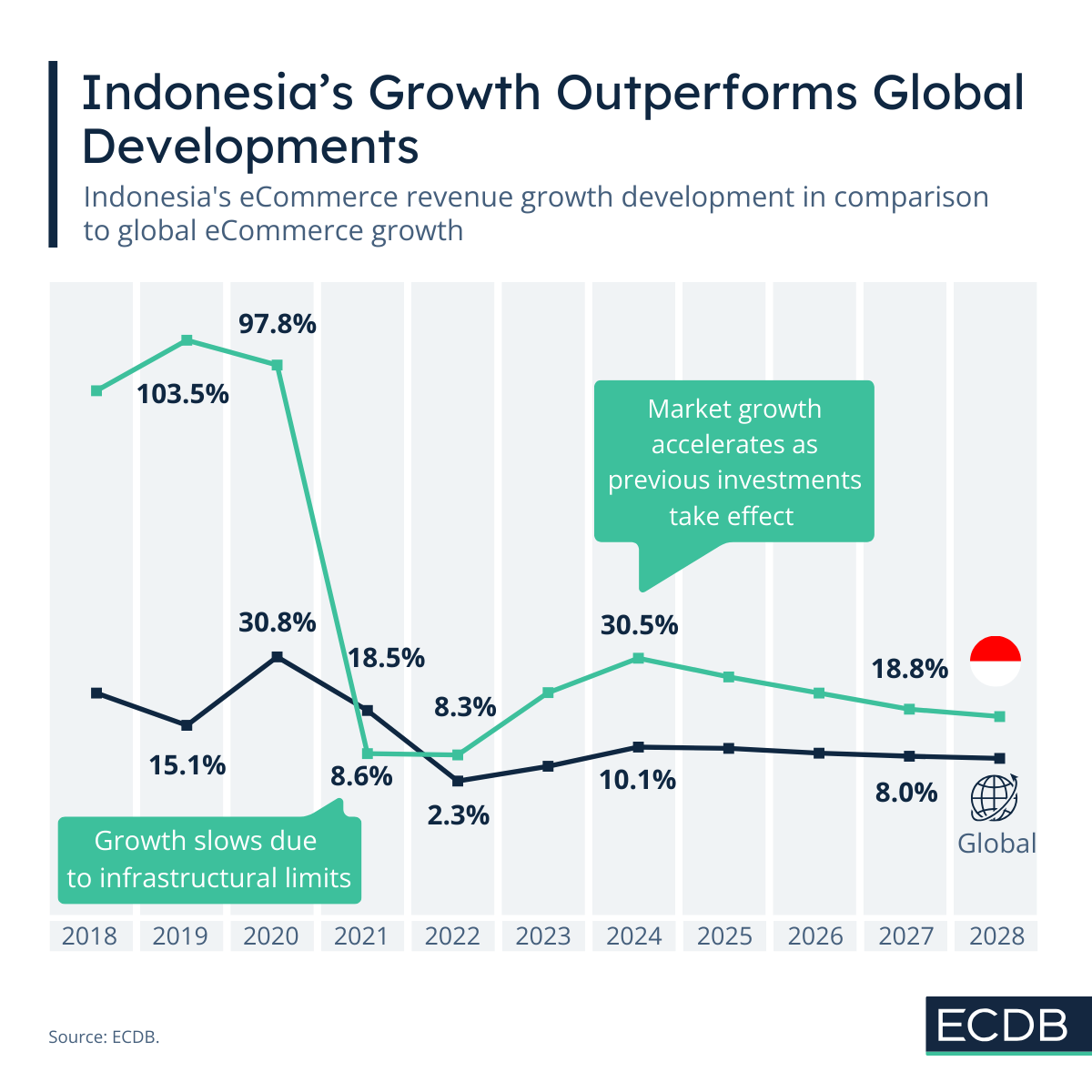Indonesia is one of the fastest growing eCommerce countries with annual revenues over US$10 billion. The country’s eCommerce growth has been around 100% annually from 2018 to 2020, meaning that the market has doubled in size each year. Indonesia’s case is notable, because its growth development runs distinct to the worldwide market .
Indonesia is a leading market among its neighboring regions in Southeast Asia, spearheading the growth common to countries in the area. The factors behind Indonesia's high growth rates are primarily related to its character as an emerging eCommerce market. Compared to the global market, Indonesia has consistently outperformed global rates for a decade, except once in 2021.
A Main Reason for the Surge is eCommerce Inclusion
The main reason for Indonesia's eCommerce revenue surge is the mass inclusion of previously inactive segments of the population. This happened in the years before the pandemic and was driven by government initiatives but became necessary when the need for contactless solutions was most prevalent.
eCommerce online share provides a clearer picture of how far into the economy online sales reach. Its course aligns with eCommerce revenue development, which means that during intense expansion of eCommerce penetration between 2017 and 2021, revenues surged accordingly. In the years after, when online share diminished a little, revenue growth slowed.
In 2021 and 2022, eCommerce revenues grew more moderately than the global market. While the slowdown is unusual in international comparison, in Indonesia it reflects a stabilization after years of rapid gains. A growth ceiling has been reached after years of surges in market revenues, which means that there was not enough developed infrastructure to support the same level of growth for an extended period of time. With continued investments into digital infrastructure, banking opportunities and internet access, eCommerce penetration has a basis for development again. That groundwork allows for increasing online share and revenue growth rates in the years since 2023.
Suitable Solutions for Peculiar Problems: Mobile Platforms, Marketplaces, Dropshipping
Increasing eCommerce adoption of consumers in Indonesia’s smaller cities and rural areas further contributes to the above-global average growth in the years after 2023. The market has special characteristics that respond to common livelihoods in the country. Because mobile access is most common in Indonesia’s consumer base, shopping formats that rely on this technology have struck a chord. That is how livestream shopping and social commerce are thriving in Indonesia and Southeast Asia.
The government helps this development by improving digital infrastructure and logistics capabilities. Since 2012, there is a National Online Shopping Day (Harbolnas) on 12/12, and online payment adoption is up-and-coming.
Another important aspect of Indonesia’s eCommerce growth are online marketplaces, the most prevalent of which are Shopee and Tokopedia. Dropshipping is another pillar of Indonesian eCommerce growth. Both allow the large quantity of small businesses to participate in eCommerce, sometimes even cross-border. Dropshipping is set up by individuals who conduct online shopping for a customer base of people who are either unbanked or have no sufficient internet access and capabilities. It is a local response to a common obstacle to eCommerce, helping everyone in the process.










